
The navigator’s position on Chatterbox II (42-102955, 351BG), taken 20 April 1944. The Cramer Posture Chair is typical of B-17 installations.
When war broke out in Europe in 1939, Boeing drastically redesigned the B-17 for the realities of an offensive campaign. Spearheaded by aerodynamicist George Schairer, the B-17E set the standard for future variants in the B-17 series and stood in stark contrast to prewar models inside and out. The bomber’s interior seating is a particularly good example of this.
While the B-17C/B-17D had a whopping nine aluminum bucket seats, the B-17E entered service with six, of which three were almost always removed prior to combat. Two of these seats were auxiliary stations in the radio compartment, having no real use other than to provide passenger seating. The third was the bombardier’s seat which, situated on a complex system of springs and post mounts, took up an inordinate amount of space in the nose. This latter seat was replaced in F-Block-55 with a Posture Air Flow chair.
Introduced in 1935, the Posture Air Flow was a product of the Cramer Chair Co. of St. Louis, Missouri. The basis of the modern secretary-style office chair, the Air Flow used a seat plate filled with holes to vent the pressure from the cushion above. For the B-17, the Posture Air Flow was first used on the E-model’s navigator’s position. Mounted on a four-legged base, the chair was strapped to the floor through a hoop. The modifications required for the navigator’s position in regard to the cheek and nose guns (see here) often made this arrangement awkward, so many crews elected to remove the navigator’s chair altogether. This issue was solved in the B-17G series, which mounted the chair on a swivel attached to the table, allowing the chair to be swung out of the way when necessary.
As for the bombardier, with field modified nose guns taking up so much room, many bombardiers elected to sit on their knees rather than try and maneuver around a chair. This can be seen particularly well in footage from William Wyler’s Memphis Belle documentary, with navigator Chuck B. Leighton and bombardier Vince B. Evans laying on the floor where the chair would have originally been (see here). When a Posture Air Flow was added to this position later in the F series, it was given a hinged back to compensate for its obstructive space (see here). The G model took this a step further, considerably shortening the legs on the chair to where it was barely off the floor.
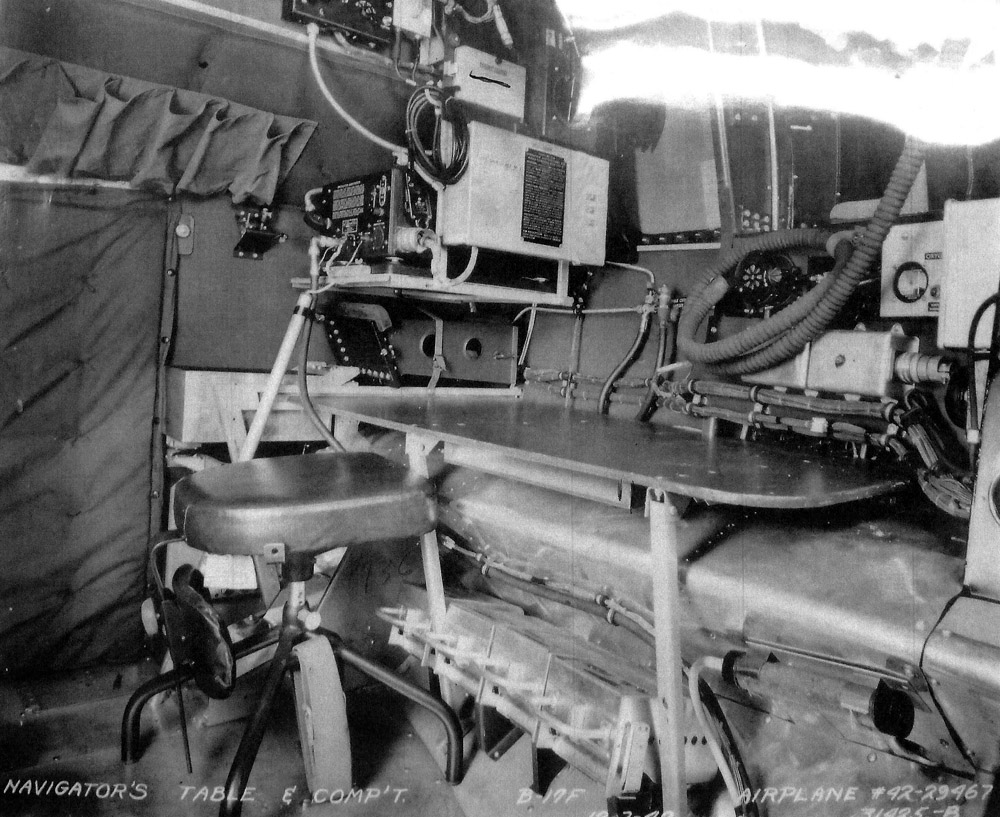
The navigator’s position aboard Flak Dodger (42-29467, 99BG) – a typical arrangement on a B-17F. Note how the backrest on the chair has been mounted inverted so the navigator can waddle on and off his seat.

A fascinating example of a field-modified B-17E. Not only has the fabric covering been returned after the addition of cheek guns, but the navigator’s chair has been mounted in the bombardier’s position (sans backrest). Note the mountings on the floor where the bucket seat had once been. Also note where the censor has blotted out the bombsight.
The Posture Air Flow later saw use in the radio operator’s compartment, replacing the armor-plated bucket seat at F-Block-100. Surprisingly, this decision was later reversed, the bucket seat returning on G-Block-60.
The Posture Air Flow also saw use in the Boeing B-29, which has created a bit of confusion in the restoration field. You see, while B-29 chairs are easily distinguishable from B-17 chairs, all too often, B-29 chairs find themselves aboard B-17s because they are so much more readily available. While the B-29 used an olive canvas cushion mounted on a black, three-pronged frame, the B-17 used a dark green vinyl cushion mounted on a bronze green four-pronged frame (aside from the G-series swivel seat).
We were fortunate to have in our possession an original cushion and seat plate. The plate was made of 9-ply 3/4 maple, using a groove in the side to hold the cushion in place with tension wire. This groove was astonishingly difficult to reproduce, the depth and curvature of the groove befuddling several companies we approached about replicating it. In the end, we were reproduced the curve by cutting it out by hand.
My wife, who is a graphic designer, graciously took the time to recreate the period Cramer Chair Co. labels which adorn the seat’s backrest (click here and here). These labels included a listing of Cramer’s patent numbers, each of which we cross-referenced with the patent office to ensure we had correctly identified each number.
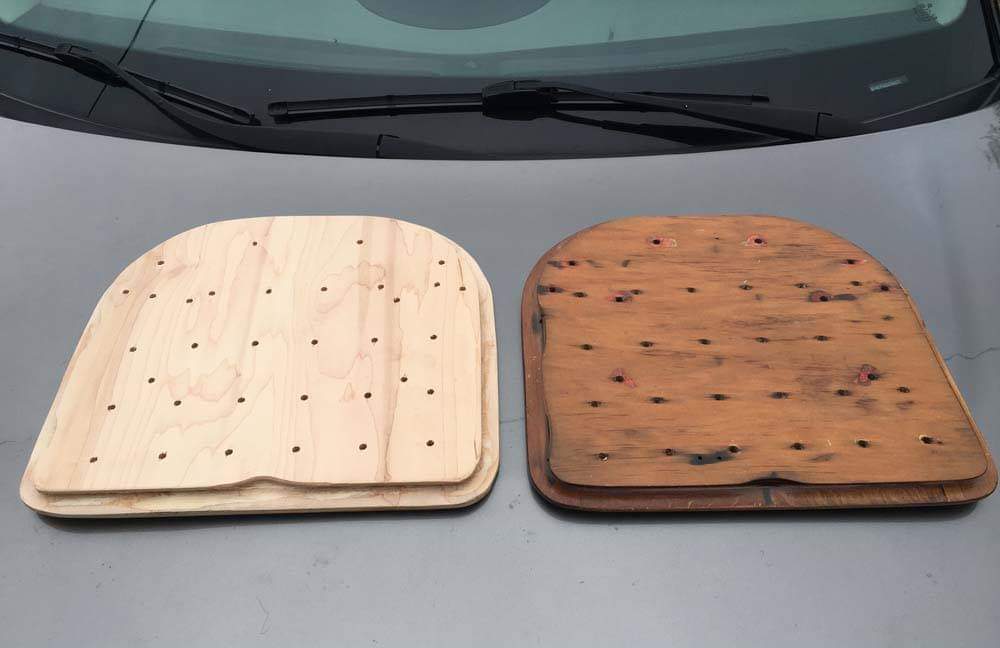
One of our replica seat plates beside the original sample. The holes which attach to the frame and seatbelts have been marked with red crayon.
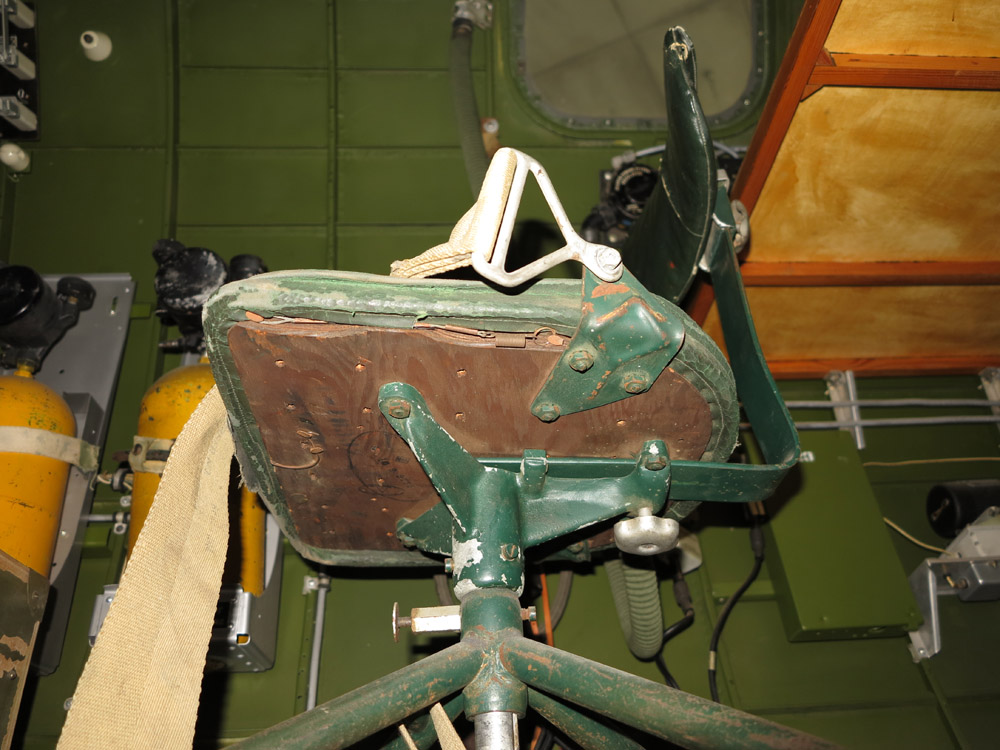
An original B-17-issue Posture Air Flow, on display aboard Mary Alice (44-83735) at the Imperial War Museum in Duxford, England. The way the cushion attaches to the seatplate can be seen here.
We were extremely fortunate to be advised on these seats by Bob Wehner of St. Louis, a former wartime employee of Cramer who graciously advised us on how to properly reconstruct a Posture Air Flow. Mr. Wehner sent us a step-by-step instruction guide, with pictures, taking the time to answer any questions we had despite being some 97 years young. We are forever thankful for Mr. Wehner’s help and to Cramer Chairs for putting us into contact with him.
For those interested in reading Mr. Wehner’s instructions, click here.
We also want to thank the Imperial War Museum for providing us with a plethora of reference photos from Mary Alice, who has in her radio compartment an original Cramer Posture Air Flow.
Lastly, we want to thank the Smithsonian Institution’s National Air & Space Museum who provided us with a copy of Blueprint 34G1646, which entails the B-11 seatbelt produced in wartime by Waco Aircraft. This was the seatbelt used on the B-17. This blueprint has been forward to Joshua DeJong of TheRiggerDepot who hopes to reproduce the B-11 seatbelts for Lucky Thirteen. Joshua’s work is superb and we look forward to working with him on this project.
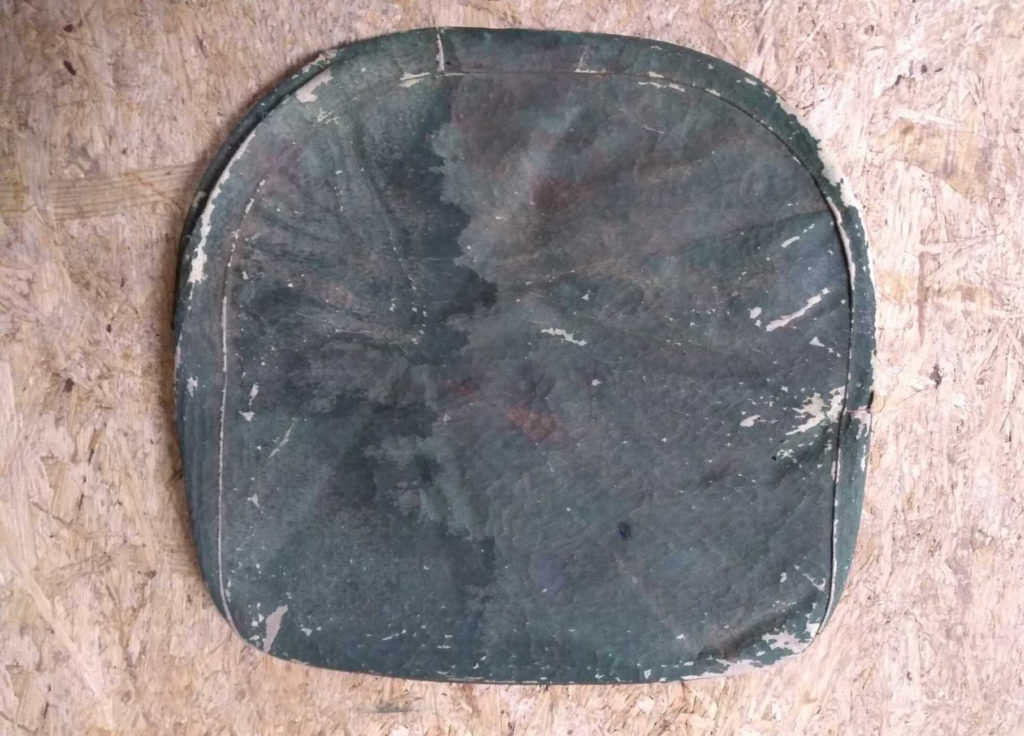
The top of our original seat cushion example.
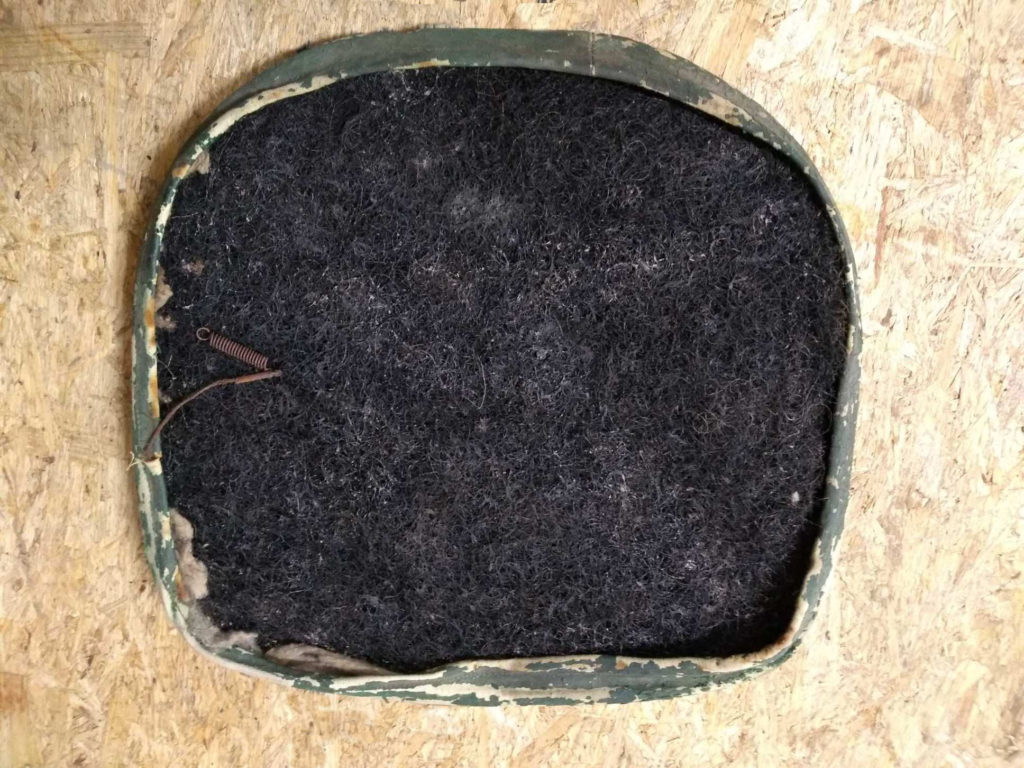
The bottom of our original seat cushion example. The material you see is animal hair. Beneath this layer is a small amount of kapok cushioning, flattened with age and use.
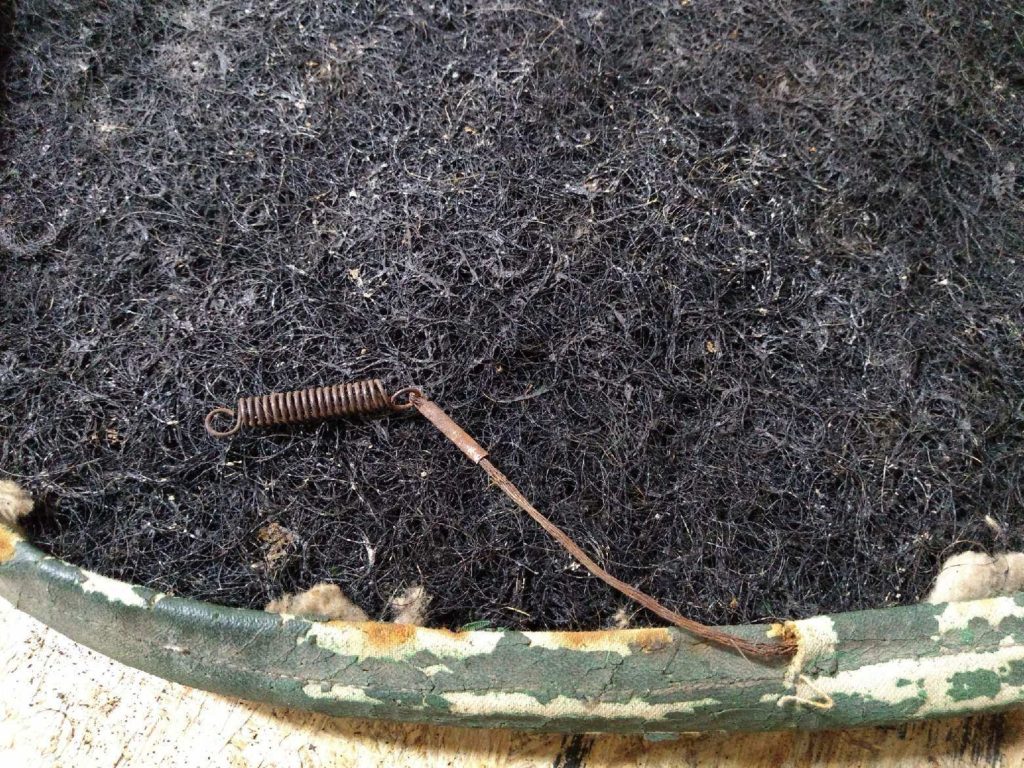
A close-up of the tension wire and one of the spring ends. The other spring end has broken off from age.
